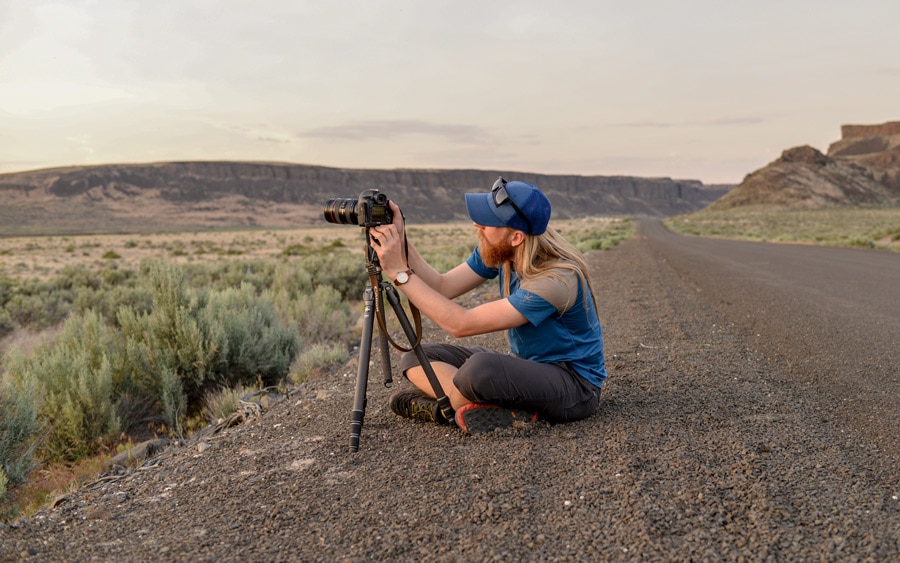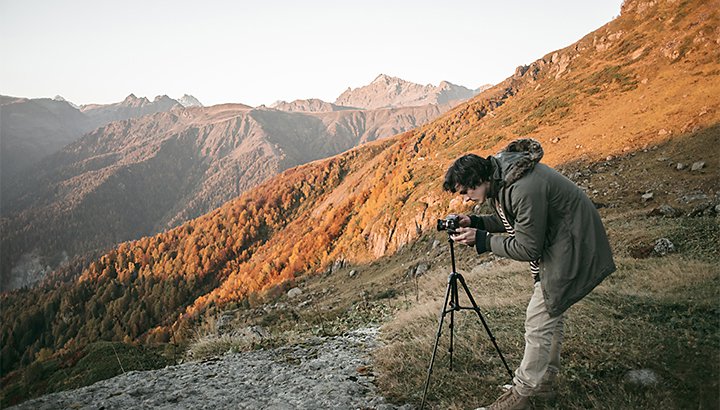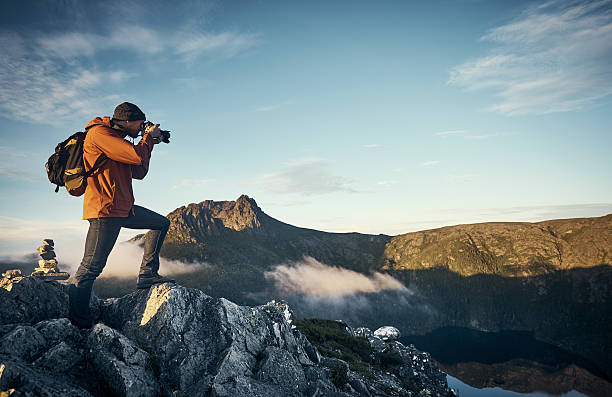Nature Photography Tutorial
There are few things in this world that are as beautiful as nature photography, but cameras can immortalize the most important moments in history. It is possible to preserve the exact moment of a lightning strike or capture a meadow in bloom through these images, bringing peace and tranquility to those who might otherwise not experience it.
In order to capture grandiose pictures of our world, you’ll need a different skill set than the skills you’d use to photograph people, events, and other subjects.

Nature Photography v Landscape Photography
There is a difference between nature photography and landscape photography. Natural areas are designed to focus your attention on small details. Taking a broader view of a landscape is important.
This nature photography tutorial won’t require us to think like Ansel Adams!
Photographing nature requires a slower pace. In nature, it’s easy to walk past interesting subjects. To make an image, you need to consciously consider things like ‘will it work as an image?

’1.Make sure you have a wide-angle lens with you
It’s best to pack a wide-angle lens before heading out to the countryside on Nature Photography Day if you want to get noticed. The goal of many images is to show a sense of wide-open space by having a centered focus, even though photos of the environment also have a main subject.
You can also use faster shutter speeds with these lenses because they have a greater depth of field. Furthermore, they offer a greater depth of field. Although some of these tips may be situation-specific, there are rarely instances when wider angle lenses aren’t ideal for nature photography.
2.Longer focal lengths are better
It is important to balance the length of your focal length when you are taking photographs, as short focal lengths provide a wider view. For example, if you are capturing images of wild animals, a longer focal length will provide better magnification. It is important to remember that photography can carry inherent risks that require a distance for safety, even though we all want to snap that photo of a hippopotamus up close.

3.Make sure you understand the topic
It is essential that you really know your subject when it comes to nature photography. The truth is that we capture better images when we understand our subjects. It is much easier to get the perfect picture of a lioness if you know the way she behaves before a charge. If you know that basking sharks are actually harmless to humans, you may be able to get a close look at the scary-looking pacifist if you learn that.
4.Make use of RAW formats
In their daily quest to capture beauty, many budding photographers do not use RAW format – particularly those who stick to human-centered images. This is because it can take up a considerable amount of memory card space. Typically, however, RAW format is your best friend when it comes to nature photography.
In contrast to JPEG formats, cameras that capture RAW images produce unprocessed images. This means you’ll have a huge amount of pixel information to work with when you’re editing photographs later. It is rare for images to capture nature exactly as it appears. Therefore, post-snap editing is no sin.
5.Keep the Rule of Thirds in mind
If you divide your image into nine equal parts with two equidistant vertical and horizontal lines, you are using the Rule of Thirds. The rule suggests that important aspects of your photo should be placed along these lines or where they intersect with each other.
You should always use your best judgment when capturing these images, or just take several pictures with various compositions. A focal point may need to be placed in the center at times, but the Rule of Thirds encourages the viewer to look around the frame.
Having subjects placed along these lines creates more energy and tension in your images; this allows viewers to take in more of the natural environment.
6.Decide what your subject will be
When it comes to nature photography, the subject is often apparent. When you’re snapping wildlife, it’s obvious that you’re snapping an animal. However, when it comes to landscape photography, it can be more difficult to define the subject.
What stands out when you look through your viewfinder? Even ordinary objects such as rivers, meadows, rocks, and clouds can be transformed into extraordinary images by a great photographer. Don’t just take a picture because it “looks pretty.” Choose a subject and capture the scene accordingly.

7.Natural light can be used to your advantage
You can sometimes use your camera’s flash function for nature photography, but you should try to use natural light as much as possible. In order to prevent harsh shadows and to provide even illumination, natural lighting will provide a soft, hazy quality just after or just before sunrise.
The golden hour is known for a good reason. Don’t be afraid to snap images during what’s called the blue hour (right before sunrise or after sunset). The evenly diffused sunlight makes for excellent pictures.
8.Mirror effects can be achieved with water
There are some stunning examples of nature photography out there that showcase mountain views reflected in crystal lakes. In any case, capturing a reflection in water can only enhance the majesty of your picture. Golden hour is the ideal time to take the picture if you are aiming for this.
In order to get the perfect mirror image, you must follow a few steps. It is best to use a tripod and use TV mode or Shutter Priority mode, and you should also allow your camera to select the aperture while using a slow shutter speed to produce crisp reflections.


